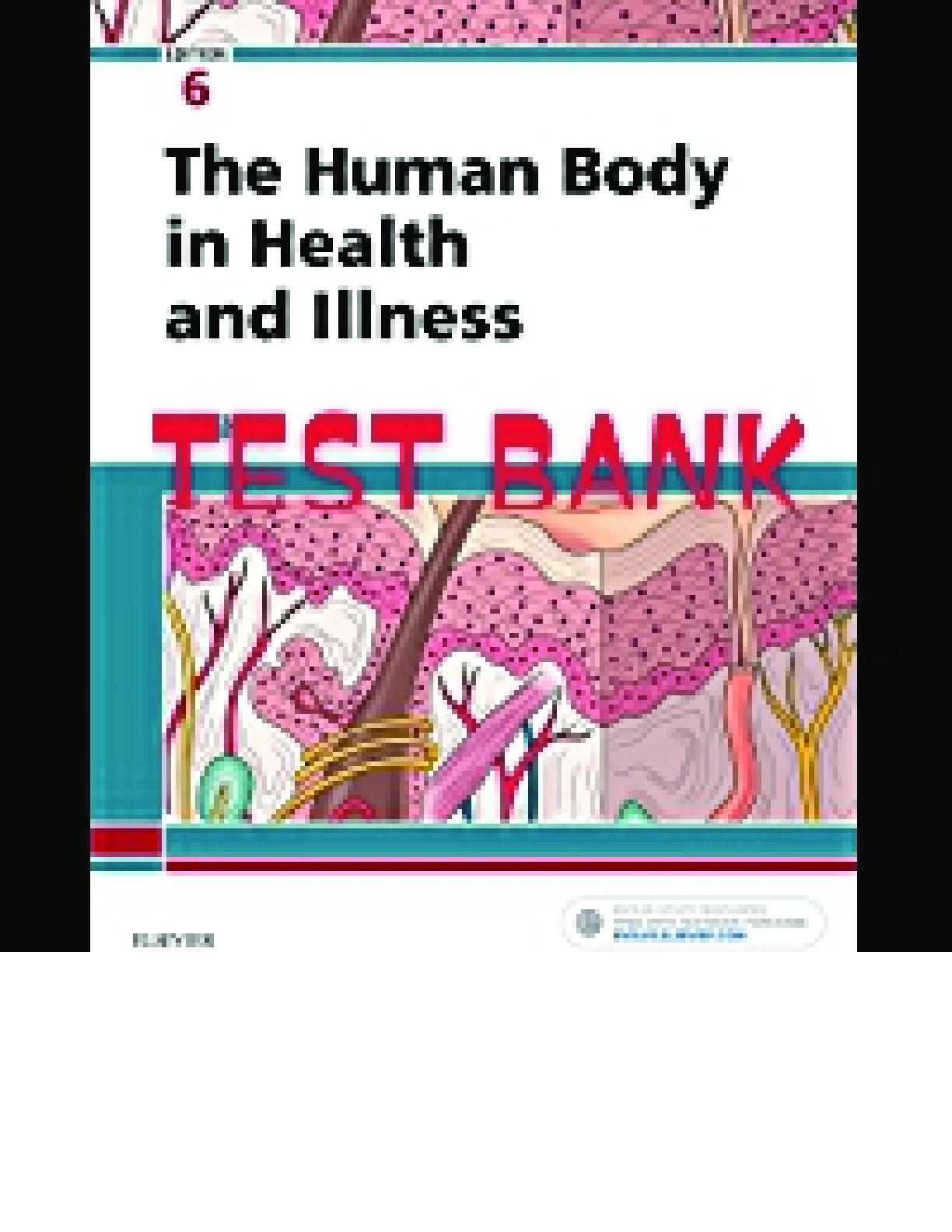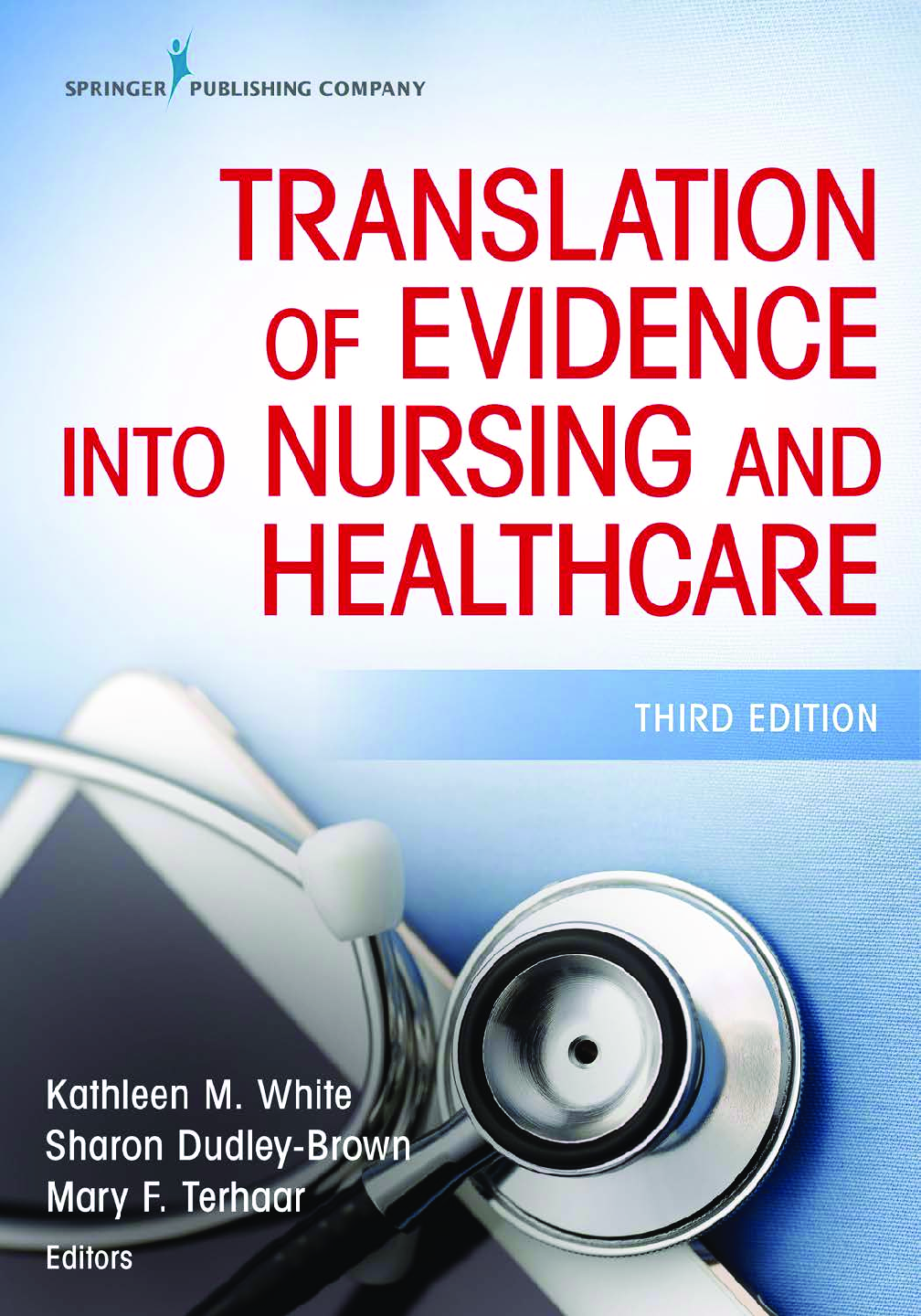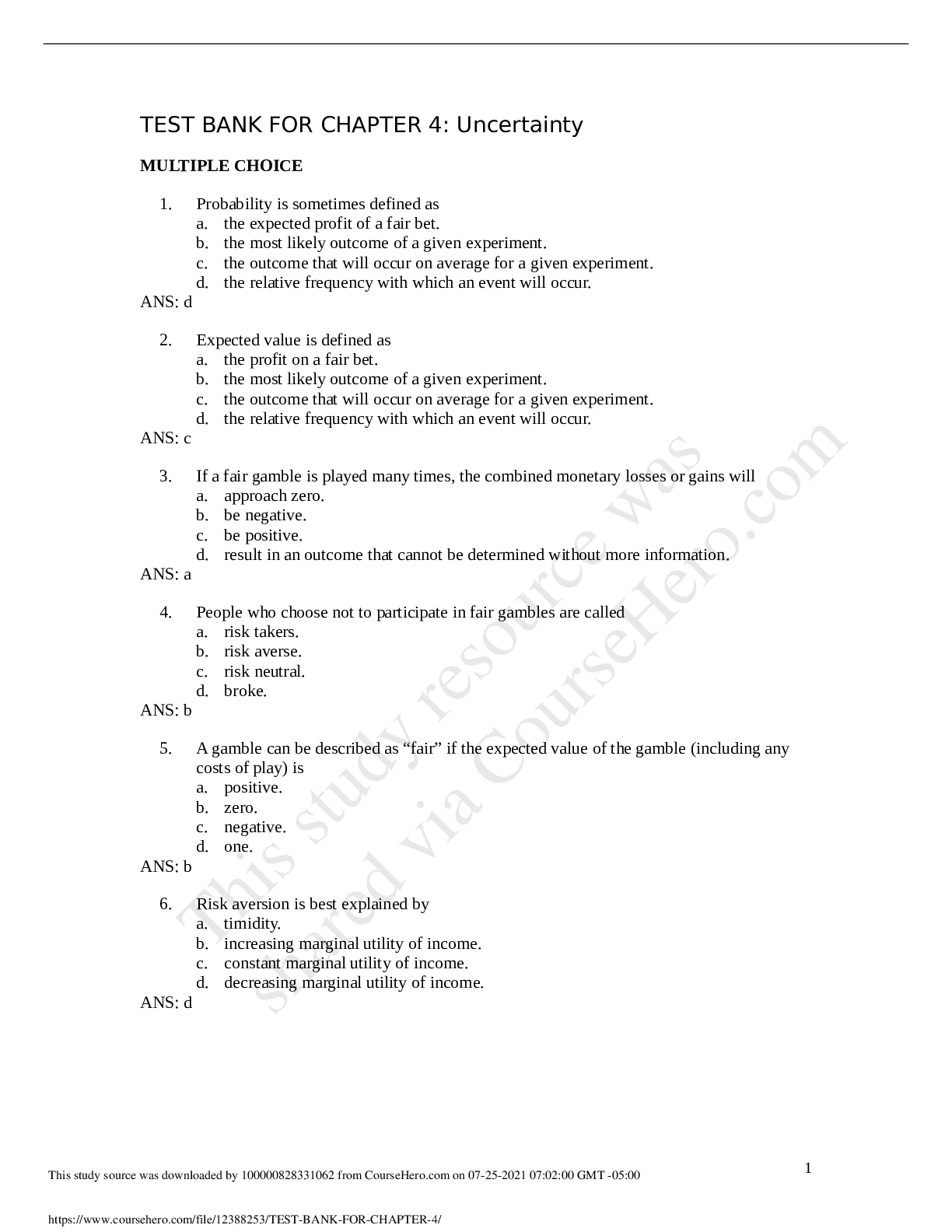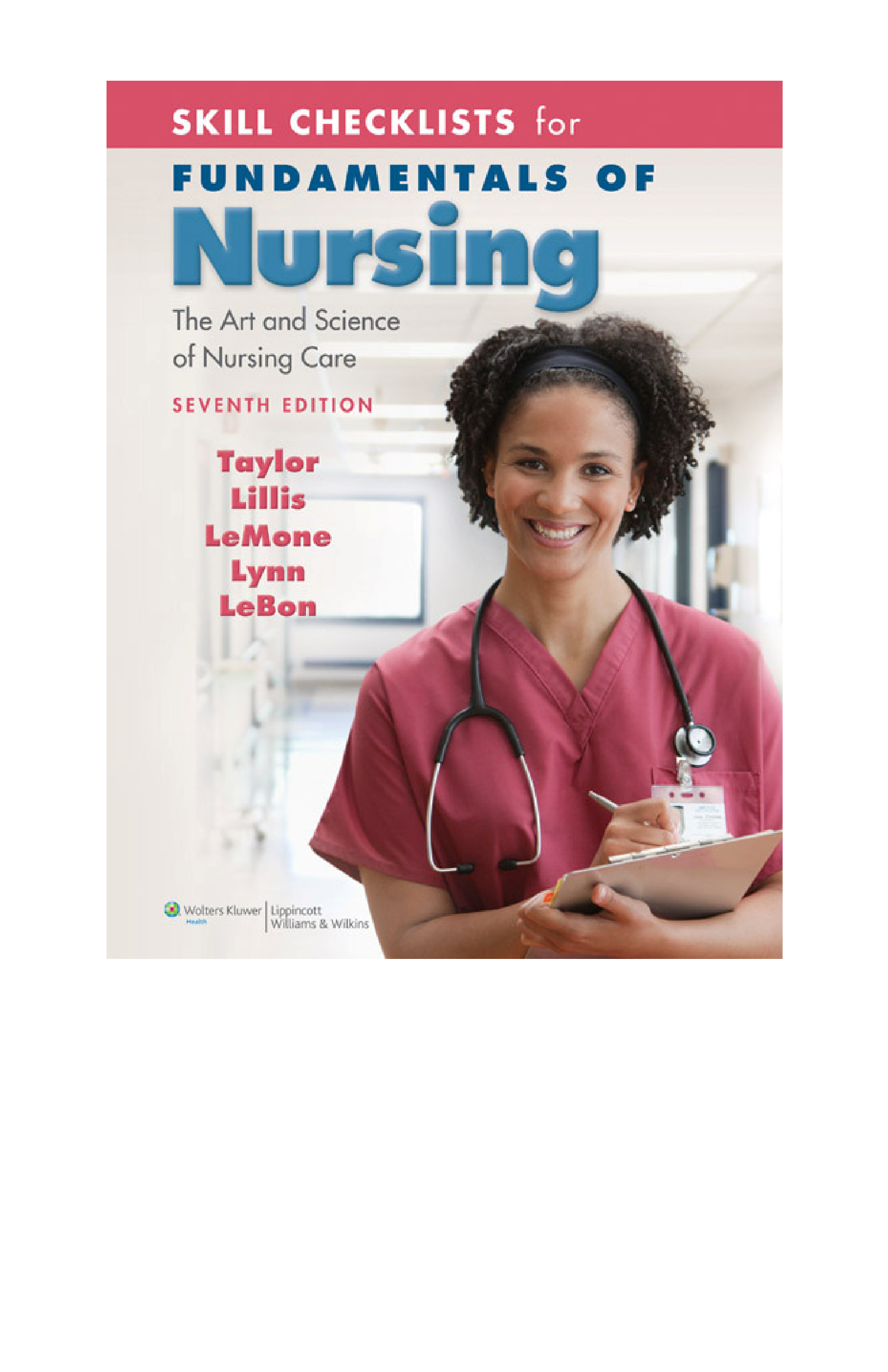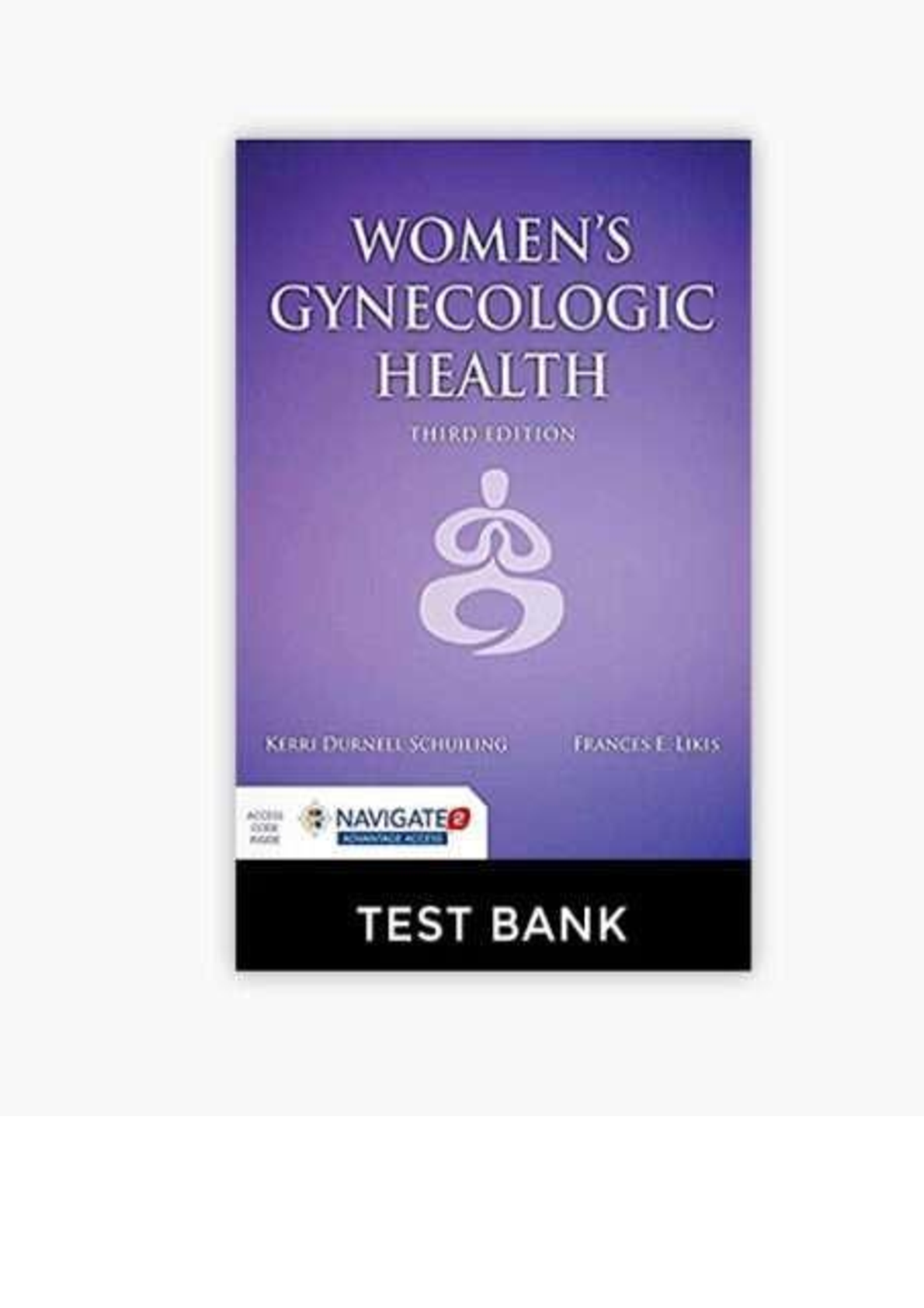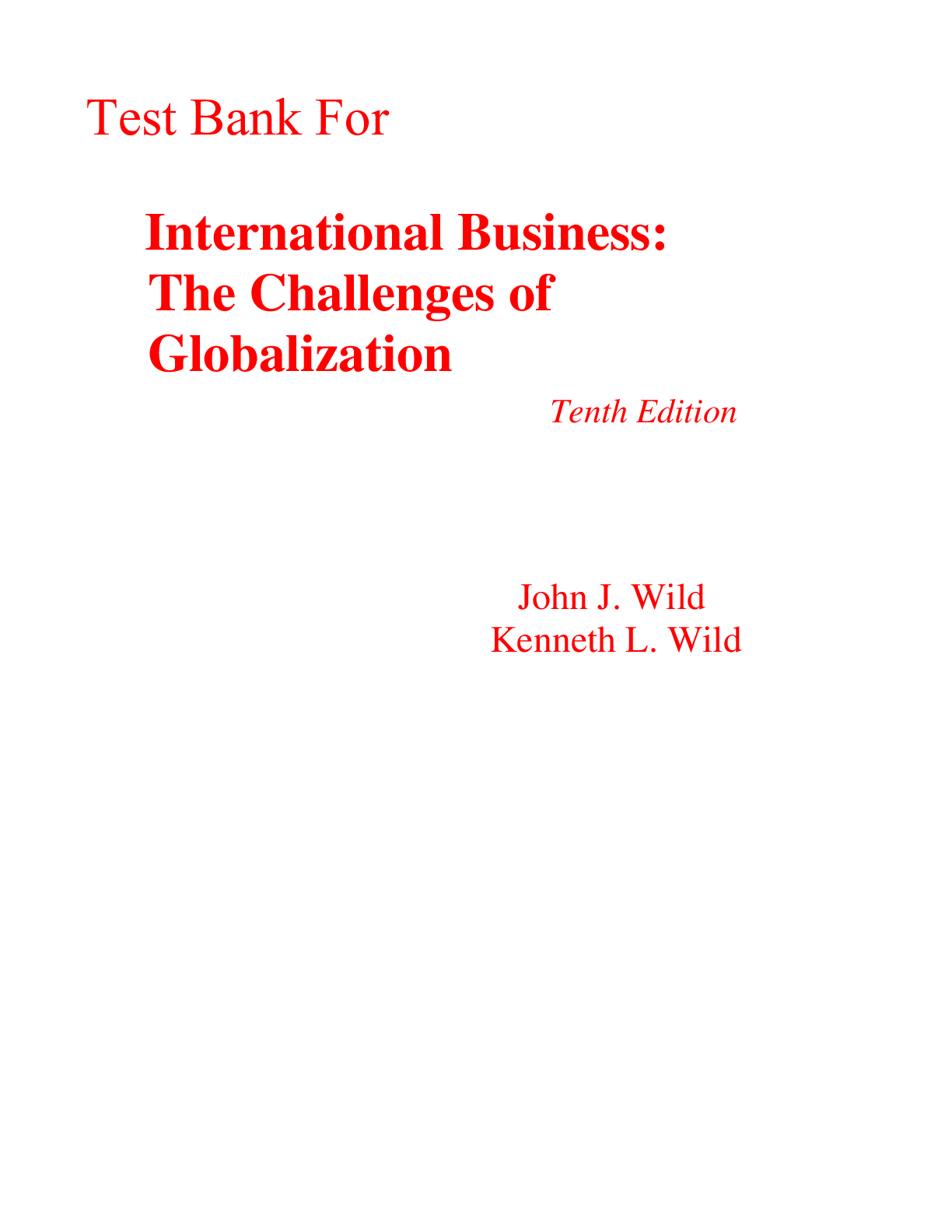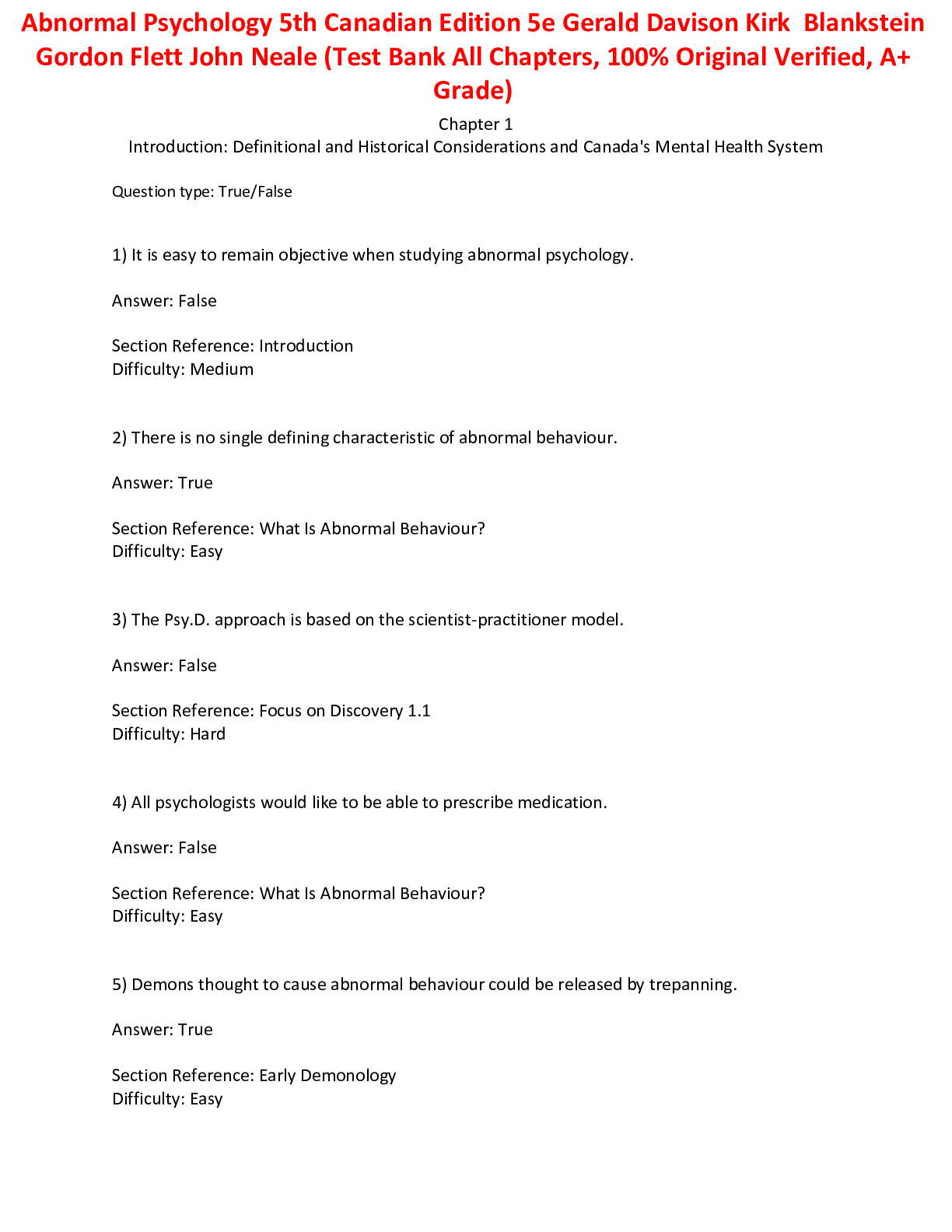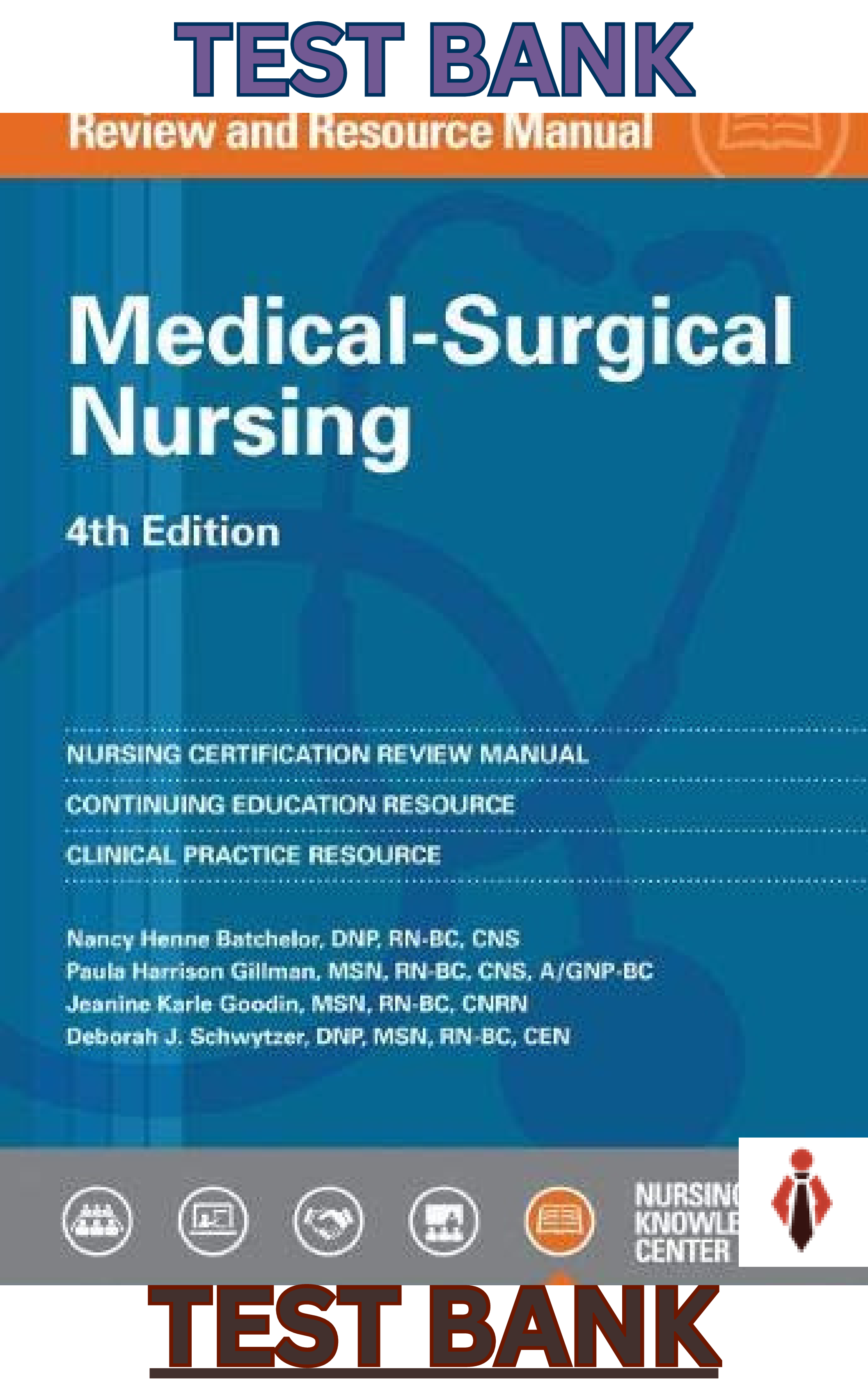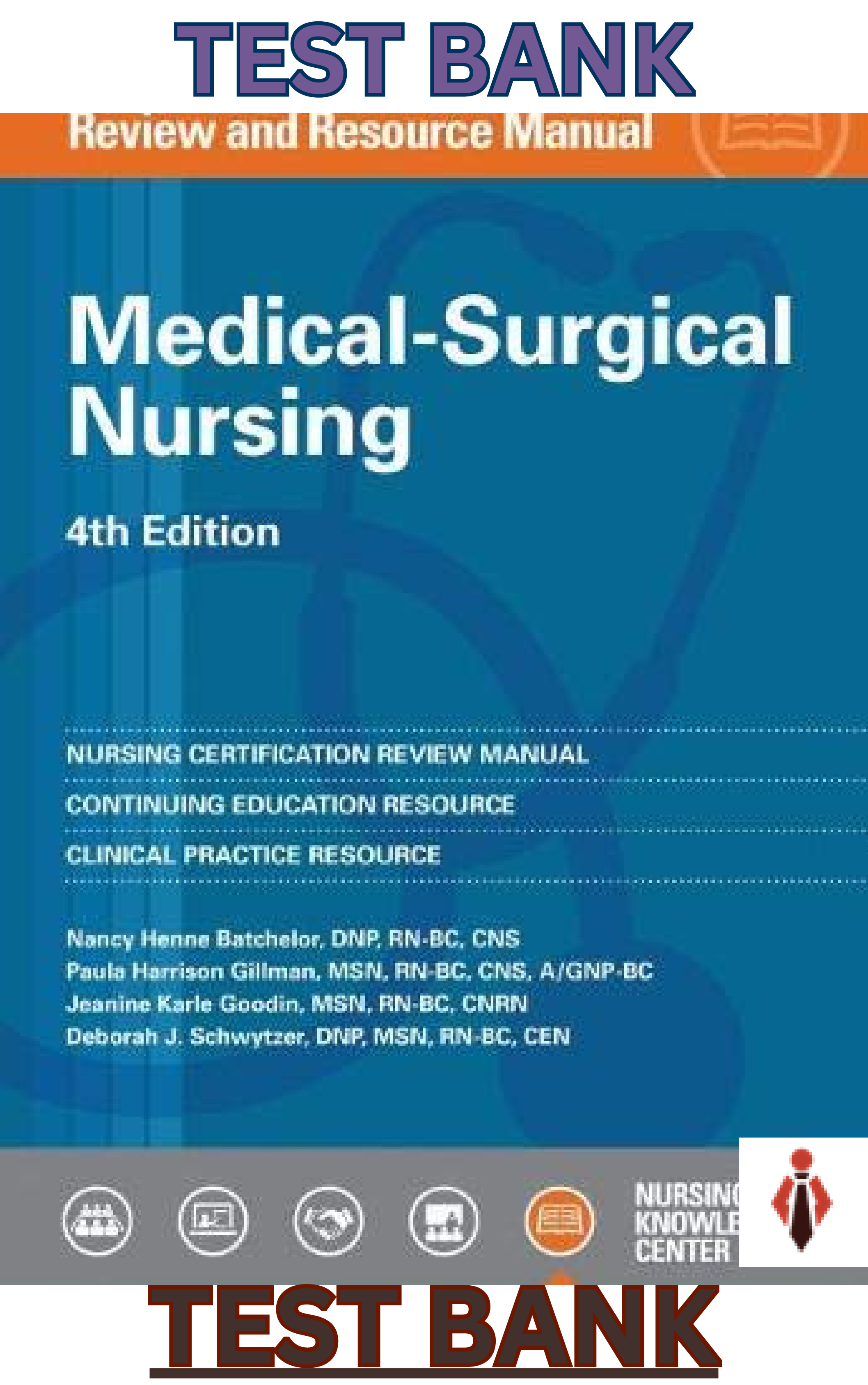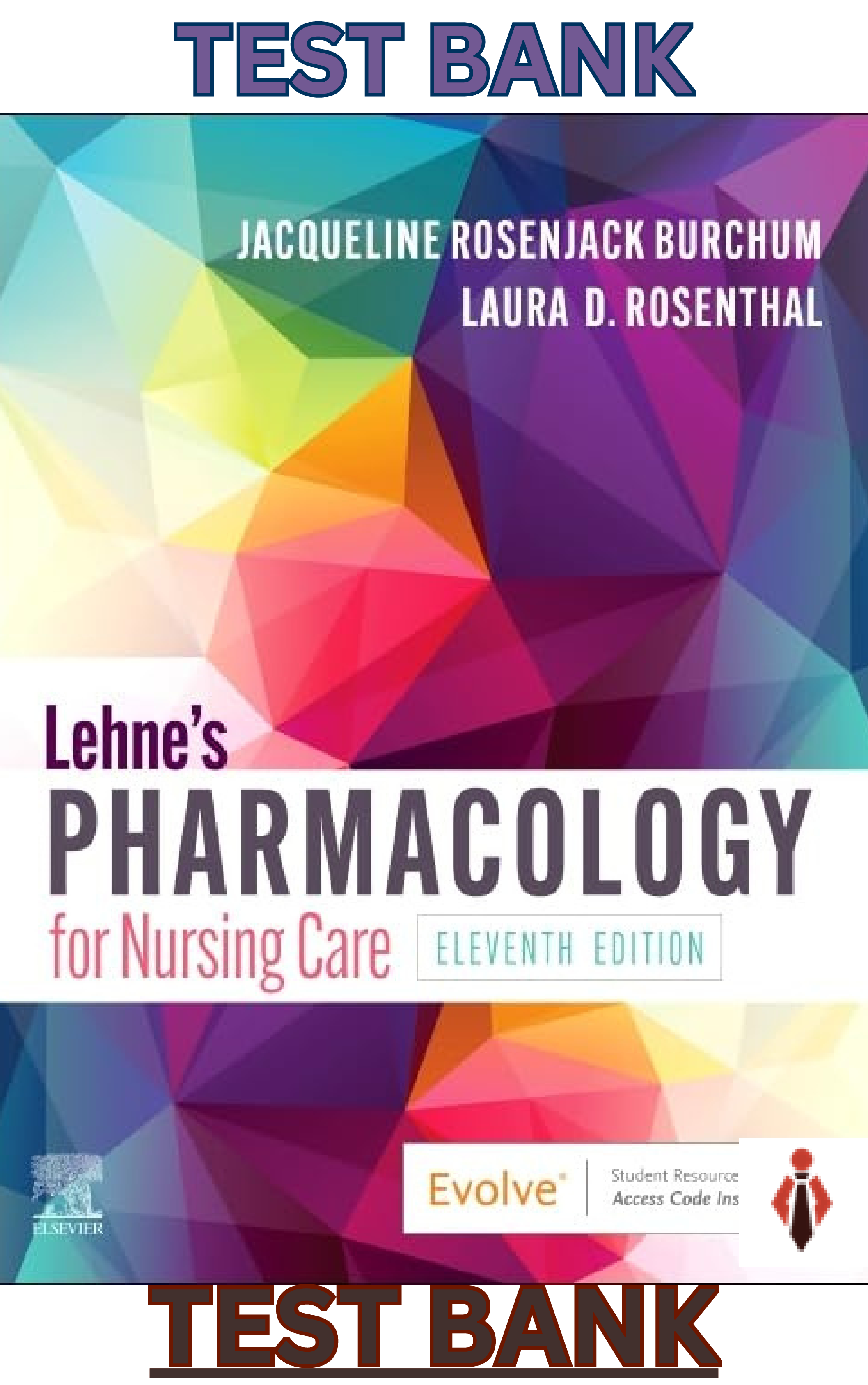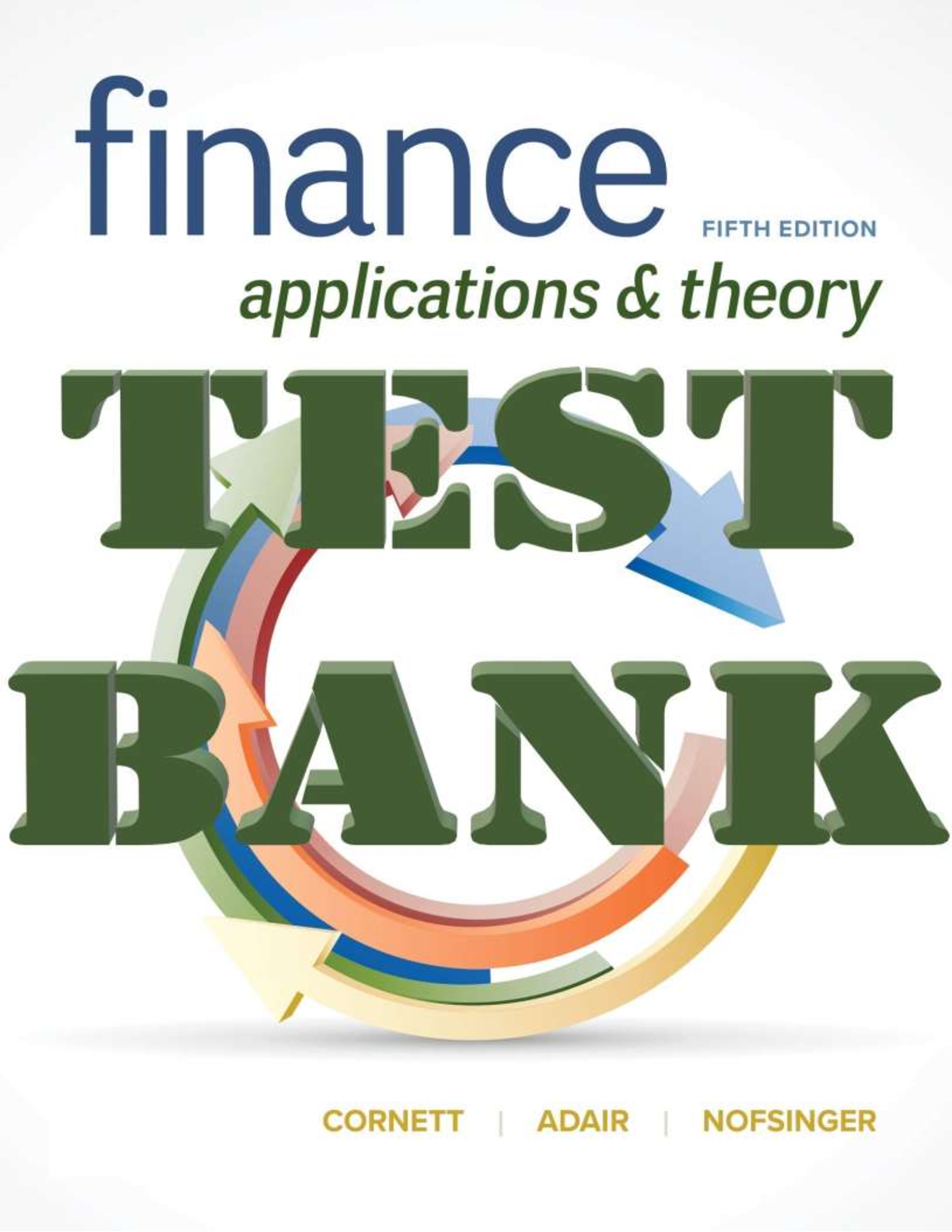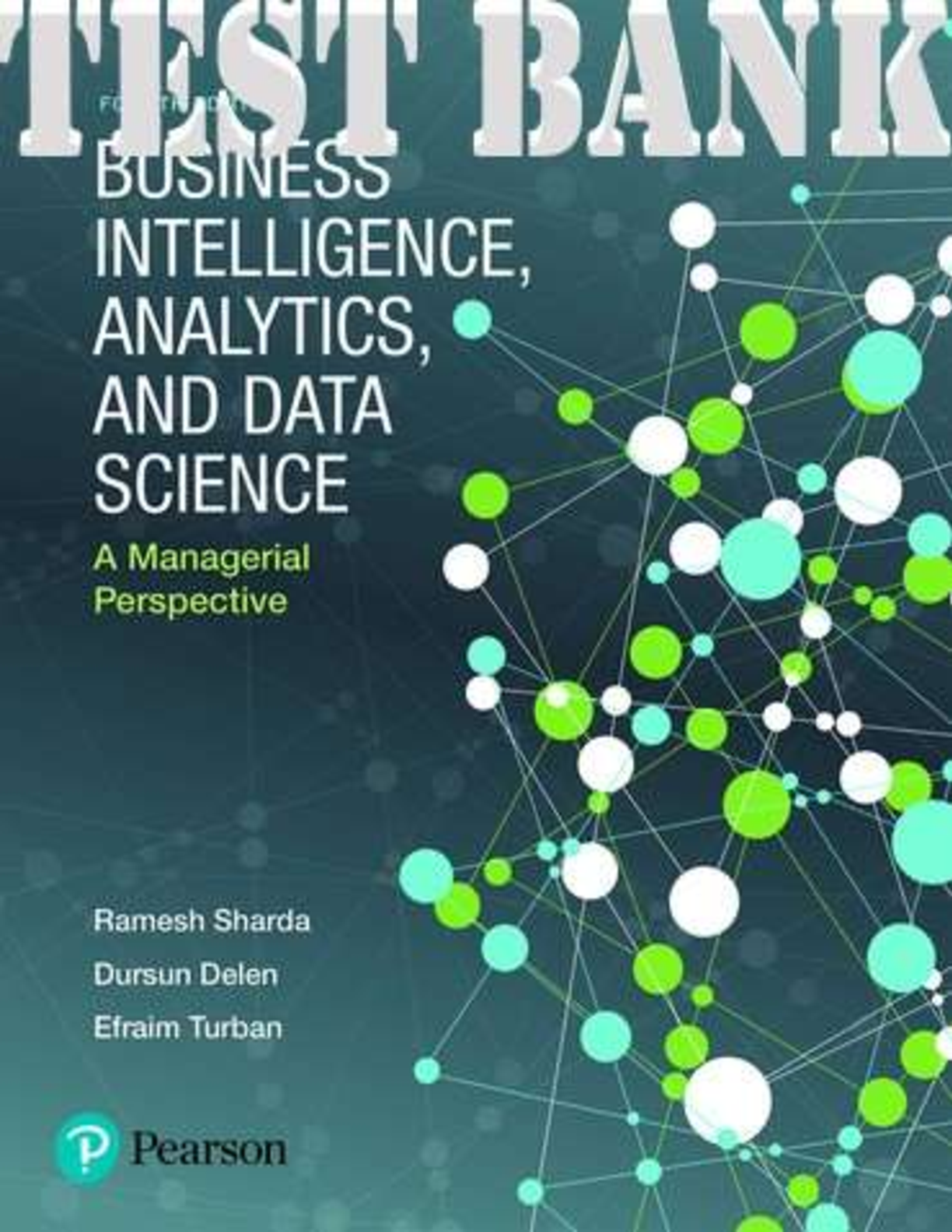Exam (elaborations) Womens Gynecologic Health 3e TB.
Document Content and Description Below
CHAPTER 1 QUESTIONS MULTIPLE-CHOICE QUESTIONS Select the one correct answer to each of the following questions. 1. Which of the following best defines the term “gender” as used in this text? a... . A person’s sex b. A person’s sex as defined by society c. A societal response to a person’s self-representation as a man or woman d. A person’s biological presentation as defined by himself or herself 2. Which factor bears most on women’s health care today? a. The complexity of women’s health b. Women’s status and position in society c. Population growth d. The economy 3. Why is acknowledging the oppression of women more difficult within Western societies? a. The multiplicity of minority groups complicates the issue. b. The availability of health care makes acknowledgment more difficult. c. The diversity of the news media clouds the issue. d. Affluence and increased opportunities mask oppression. 4. Which of the following most accurately defines “oppression” as used in the text? a. Not having a choice b. Not having a voice c. An act of tyranny d. A feeling of being burdened 5. In what way does a model of care based on a feminist perspective contrast sharply with a biomedical model? a. It provides a forum for the exploration of gender issues. b. It seeks equal distribution of power within the healthcare interaction. c. It emphasizes women’s rights. d. It opens new avenues for women’s health care. 6. Gender is rooted in _____________ and shaped by ________________ . a. society, biology b. self-representation, societal expectations c. biology, environment and experience 3 3 d. biology, hormones 7. Women’s health risks, treatments, and approaches are not always based in science and biology because _________________________________________ a. they are often based on outdated treatments and approaches. b. they are determined by social expectations and gender assumptions. c. they often rely on alternative treatments and approaches. d. scientific research often fails to take women into consideration. 8. Reproductive rights were added to the World Health Organization’s human rights framework in the last _____________ ? a. 5 years b. 10 years c. 20 years d. 40 years 9. “Safe Motherhood” was added to the human rights framework in order to __________ a. address maternal morbidity and mortality on a global level b. meet a legal obligation c. correct an injustice d. correct an oversight 10. What is a chief failing of the biomedical model in regards to women’s health care? a. Its reliance on studies comprised exclusively of males b. Its consideration of women as central the model c. Its emphasis on science and medicine d. Its limited definition of “health” as “the absence of disease” 11. The social model of health places the focus of health on _________ a. the community. b. the individual. c. environmental conditions. d. scientific research. 12. Which question below supports the strategy: “Identify women’s agency in the midst of social constraint and the biomedical paradigm.”? a. “Are ‘all women’ the same?” b. “Why do you care about the issue?” c. “Are women really victims or are they acting with agency?” d. “Who has a choice within the context of health?” 13. What had been a significant problem in medical research well into the 1990s? a. The focus on randomized clinical trials over epidemiological investigations b. The lack of representation of women in research trials c. The lack of research related to gynecology d. The focus on randomized clinical trials over observational research 4 4 14. Gender differences in heart disease can be found in __________ a. diagnosis. b. treatment. c. identification of symptoms. d. all of the above. 15. What opportunities are created by applying feminist strategies to gynecologic health? a. Better insight into research methods related to gynecology b. Better access to the populations affected by gynecologic health c. Better understandings from a wellness-oriented, women-centered framework d. Better understandings of the social construction of gender 5 5 ANSWER KEY MULTIPLE-CHOICE QUESTIONS 1. c 2. b 3. d 4. a 5. b 6. c 7. b 8. c 9. a 10. d 11. a 12. c 13. b 14. d 15. c 6 6 CHAPTER 2 QUESTIONS MULTIPLE-CHOICE QUESTIONS Select the one correct answer to each of the following questions. 1. How does Erick Erikson’s grand theory of human development differ for females? a. It recognizes achieving autonomy as a primary focus. b. It assumes only men desire autonomy. c. It assumes female dependence on another in order to achieve a sense of self. d. It assumes females desire dependence on others. 2. What is true about human development theories published before the 1970s? a. They are based on interviews conducted only with men. b. They assume androcentric models can be applied correctly to women. c. They frame women’s development as flawed in comparison to the standard. d. All of the above. 3. What is the intention of the newer feminist models of development? a. To offer a new model within the traditional biomedical focus. b. To offer alternatives to the constrained and previously misapplied models. c. To replace male generalist models with female generalist models. d. To present a contrast to privileged, white male-based models. 4. What is a key limitation of prevailing developmental models for women? a. Gender differences assumed to be biologically determined are more often socially constructed. b. They present conflicting and misapplied models. c. Gender differences are assumed to be socially prescribed. d. Similarities between male and female are emphasized over differences. 5. What event in female development marks the beginning of a tension between biologic changes and the social context? a. Turning 18 years old b. The onset of menses c. The accumulation of adipose tissue with the onset of puberty d. Pregnancy 6. How many stages does the Tanner scale use to stage sexual maturity? a. 3 stages b. 5 stages c. 6 stages d. 8 stages 7. What is the median age for the onset of menstruation for adolescent girls in the United States? 7 7 a. 9.8 b. 10.8 c. 12.8 d. 13.8 8. What factor limits an individual’s ability to function productively as an adult? a. Failure to take into account social and cultural norms b. The inability to move through the world with credibility and respect c. Poverty d. Failure to negotiate the developmental tasks of adolescence successfully 9. The type of thinking that influences the risk-taking behaviors of adolescence _____________________ a. involves the use of symbols, advanced reasoning and expanded possibilities. b. works proactively to achieve autonomy. c. encourages experimentation and foresight. d. is rooted in the immediate and concrete. 10. What narrow term is often used to refer to the period of Early Adulthood? a. Productive years b. Reproductive years c. Young Adulthood d. Adolescence 11. Why have women’s changing roles come at a cost to their health? a. Increases in caregiving expectations compromise health b. Balancing competing demands increases stress c. Less attention is being placed on health care d. Men’s roles have not changed in relation to the change in women’s roles 12. How do Franz and White (1985) expand Erikson’s theory of development? a. By proposing a two-pathway process that includes both individuation and capacity for attachment b. By refining Erikson’s single pathway to include capacity for attachment c. By expanding issues around career and lifestyle d. By expanding issues around identity 13. What factors affect the mood changes many women in midlife suffer? a. Deficiencies of estrogen b. Psychological transitions c. Cultural beliefs and expectations d. All of the above 14. What is the primary reason many older women live in poverty and have health problems? a. They outnumber older men. 8 8 b. They have outlived their support systems. c. Their cognitive abilities decline. d. They must contend with ageism and sexism. 9 9 ANSWER KEY MULTIPLE-CHOICE QUESTIONS 1. c 2. d 3. b 4. a 5. c 6. b 7. c 8. d 9. a 10. b 11. b 12. a 13. d 14. b 10 10 CHAPTER 3 QUESTIONS MULTIPLE-CHOICE QUESTIONS Select the one correct answer to each of the following questions. 1. According to Wuest (1994), the major goal of feminist research is _______________ a. to change the design and evaluation of research. b. to liberate women from societal expectations. c. to emancipate the world from systemic bias based on gender and class. d. to expand notions of gender beyond stereotypes. 2. What concern prompted the initiation of the modern EBP movement in health care? a. That clinicians often failed to evaluate the effectiveness of their own care b. That expert opinion was valued over scientific [Show More]
Last updated: 1 year ago
Preview 1 out of 119 pages

Reviews( 0 )
Document information
Connected school, study & course
About the document
Uploaded On
Feb 16, 2022
Number of pages
119
Written in
Additional information
This document has been written for:
Uploaded
Feb 16, 2022
Downloads
0
Views
115


.png)


